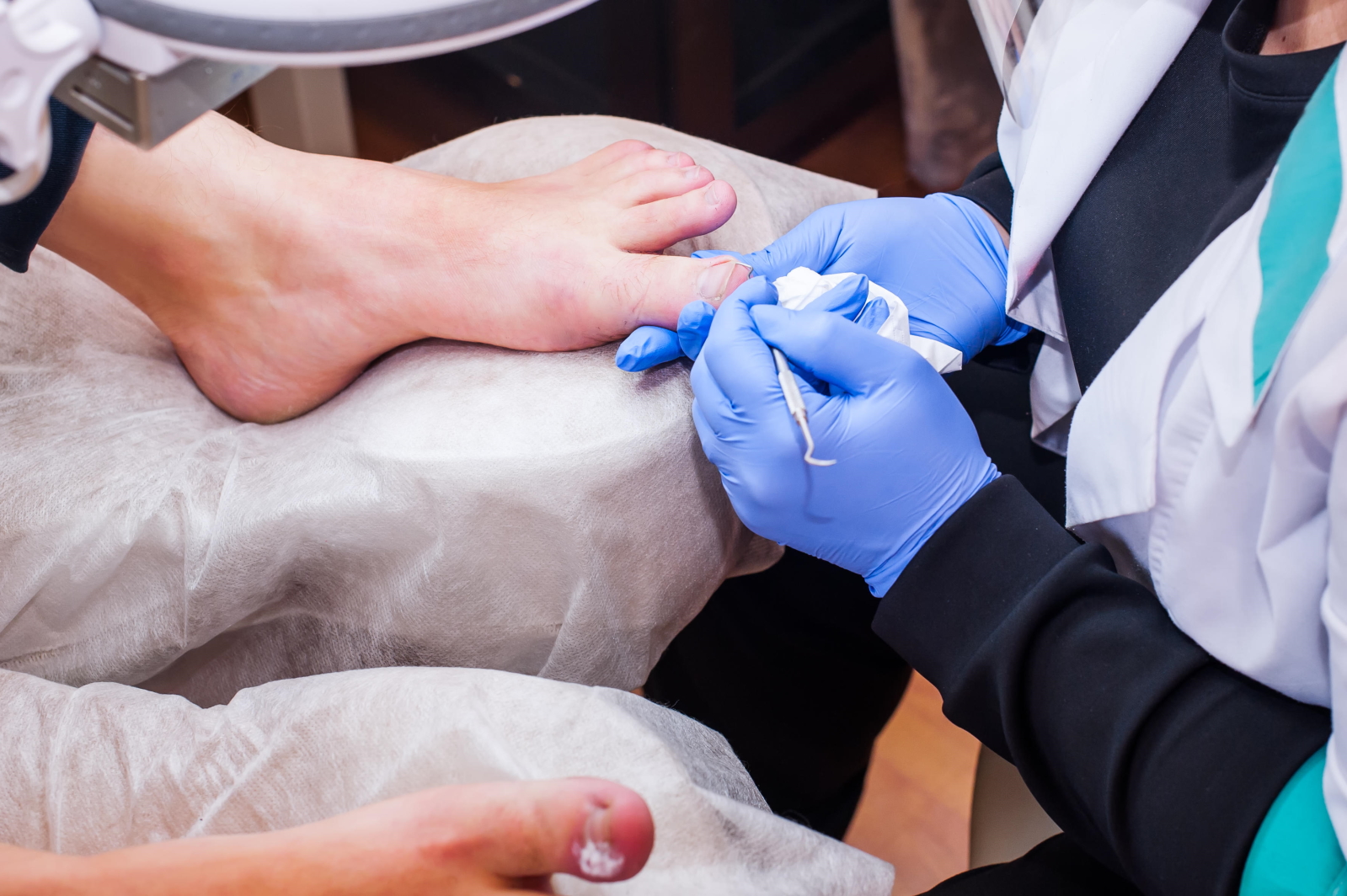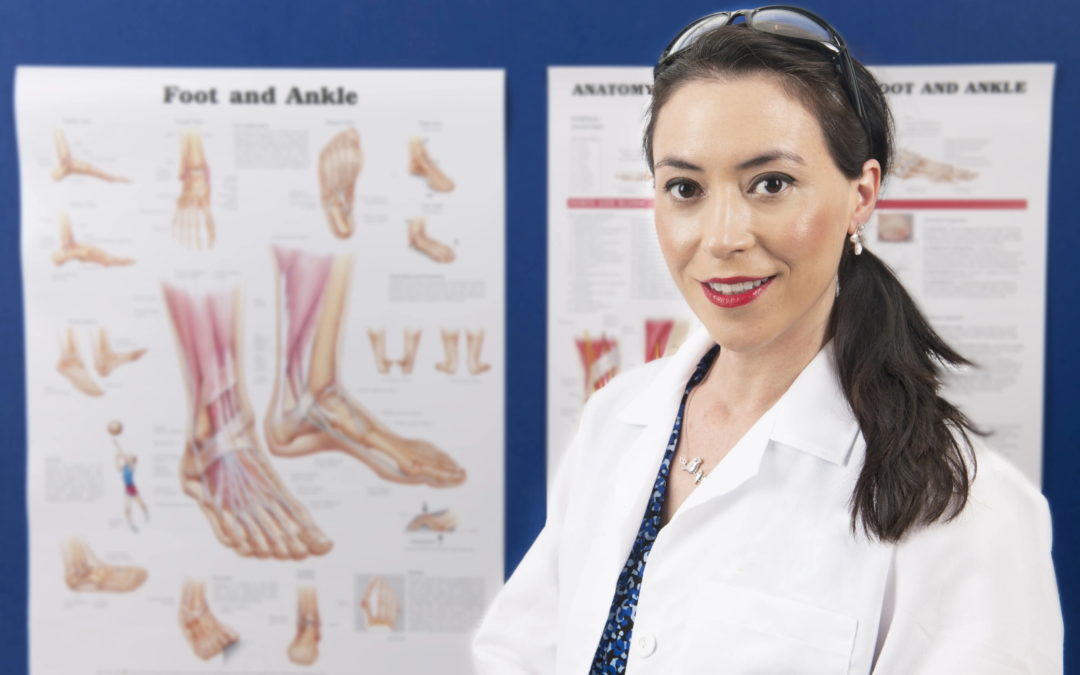When people experience unexplained pain in one or both feet, their first thought is to schedule a visit with a podiatrist. This makes sense since podiatry is devoted to matters of the foot, ankle, and lower legs. In many cases, the problem could be improper footwear, overuse, or an acute injury. But what if it’s more than that? Diabetes, peripheral arterial disease (PAD), critical limb ischemia, chronic wounds, and other serious health conditions typically begin with symptoms in the feet. Your podiatrist is a great place to start because of the wound care they provide. But it’s their team approach with a vascular doctor that ensures every patient receives the best treatment possible for underlying conditions that could be the root cause.
Our team at Hamilton Vascular strongly believes in the ongoing collaborative efforts between a vascular doctor and a well-trained podiatrist for some of today’s most challenging healthcare populations. A multidisciplinary approach helps identify and treat serious conditions faster, introduce coordinated care between services, improve blood flow for optimal healing, eliminate or improve painful symptoms, and decrease the possibly of major limb loss.
Does your podiatrist believe your foot pain is vascular-related? Schedule a consultation with Hamilton Vascular’s board-certified specialists. Appointment
Your Relationship with a Podiatrist Matters
According to an American Podiatric Medical Association study, 77% of Americans experience foot pain. But only one-third actually seek expert care. One of the reasons is because they believe the pain is from less-severe issues like plantar fasciitis, arthritis, bunions, poorly fitting shoes, etc., and will go away on its own. Visiting with a podiatrist ensures that you can overcome these and other issues faster. Podiatrists are trained medical experts who can perform surgery, prescribe drugs, order lab tests, and more. They also studied how bones, nerves, and muscles work together to help you move and the many illnesses that can affect your feet and overall health.

This includes diabetes. Approximately 37.3 million Americans have diabetes, and more than 1 in 3 adults have pre-diabetes. That’s 88 million people with pre-diabetes alone. Sadly, many people don’t know they have it. According to WebMD, more than 65,000 people each year develop chronic wounds that simply won’t heal and get so bad that the patient needs to have their foot amputated because of diabetes. Symptoms can include:
- Irritated toes and feet
- Warmth and redness around the wound
- Large open wounds on the big toes and balls of the feet
- Callused or thickened skin surrounding the ulcer
- Drainage
- Unusual odor
- Stains on socks or insides of the shoes
Chronic wounds affect 6.5 million patients annually. But they aren’t the only health condition that could be causing your feet pain. Your pain could be due to underlying vascular issues. And this is why the relationship between podiatrists and a vascular doctor is so important.
The Relationship Between a Vascular Doctor and a Podiatrist

It is advantageous for a podiatrist to partner with a highly skilled vascular doctor who can diagnose and treat a variety of vascular-related diseases. This ensures all degrees of blockages can be treated. By optimizing proper blood flow to the feet, wounds heal faster and are less likely to result in amputation.
The truth is that anyone can be diagnosed with a vascular disease, but diabetic patients are at a higher risk because of the way the disease can damage the arteries. This can lead to several prominent vascular diseases.
- Peripheral Arterial Disease — PAD affects 5 million U.S. adults and 113 million people worldwide. When this plaque is allowed to build up in the major blood vessels, it creates narrower openings for blood and oxygen to pass through. And, yes, too much restricted blood flow or a complete blockage to the extremities.
- Chronic Venous Insufficiency — When vein valves no longer hold a seal, the result is poor blood flow from your leg veins back to your heart. This causes leg swelling, varicose veins, cramps, skin changes, and leg and foot ulcers.
- Deep Vein Thrombosis — DVT is a life-threatening condition where blood clots form in one of the veins deep within your body. One-sided swelling may indicate a blood clot. One common complication of DVT is known as post-thrombotic syndrome, and the most severe cases can lead to the formation of chronic wounds.
- Restless Leg Syndrome — RLS happens when blood is not emptying out of the legs properly and is most commonly associated with lower leg tingling, prickling, tingling, and pulling sensations in the legs that can vary from a mild annoyance to something that interrupts your ability to sleep and lead a normal, active lifestyle.
You don’t have to be stuck with debilitating foot pain. Please contact us at 866-552-4866 or complete the appointment form. Appointment
In 2010, the Journal of Vascular Surgery published a list of key aspects of a diabetic foot care team comprised of a vascular doctor and podiatrist. The full list is below:
- Ability to perform hemodynamic and anatomic vascular assessment with revascularization, as necessary
- Ability to perform biomechanical and podiatric assessment with surgical and non-surgical intervention as necessary
- Ability to perform a peripheral neurologic examination
- Ability to perform wound assessment and staging/grading of infection and ischemia
- Ability to perform site-specific bedside and intra-operative incision and debridement
- Ability to initiate and modify culture-specific and patient appropriate antibiotic therapy
- Ability to perform appropriate pedal surveillance monitoring to evaluate risk of a foot to develop diabetic problems
- Ability to reduce risk of re-ulceration and infection by various protective mechanisms
Hamilton Vascular Wants to Work with Your Podiatrist Today!
The doctors at Hamilton Vascular believe that the best care of chronic wound and critical limb ischemia patients requires a team approach with podiatrists. These patients with arterial ischemic wounds, especially those in diabetic patients, require the off-loading and wound care that a well-trained podiatrist can provide. The vascular specialists at Hamilton Vascular provide the evaluation and treatment to allow optimal blood flow for wound healing.
Hamilton physicians are board certified diagnostic radiologists with additional fellowship training in vascular and interventional radiology. If your veins need treatment—or you have questions on how to avoid the onset of venous disease—an expert vascular doctor at Hamilton will recommend an individualized plan to help you get the best results. Request an appointment for a vein disease evaluation to discuss your options.
For a consultation with one of our specialists, please contact us at 866-552-4866 or complete the appointment form.
AppointmentThis information is not a substitute for professional medical advice. Prior to starting any new treatment or questions regarding a medical condition, always seek the advice of your doctor or other qualified health provider.
Hamilton Vascular serves the South Texas area including Houston, San Antonio, Austin, Round Rock, Bastrop, Brushy Creek, Cedar Park, Converse, Georgetown, Hutto, Kyle, League City, Leander, Marble Falls, New Braunfels, Pasadena, Pearland, Pflugerville, San Marcos, Schertz, Sugar Land, Katy, Clear Lake, Webster, The Woodlands, Universal City and more.

